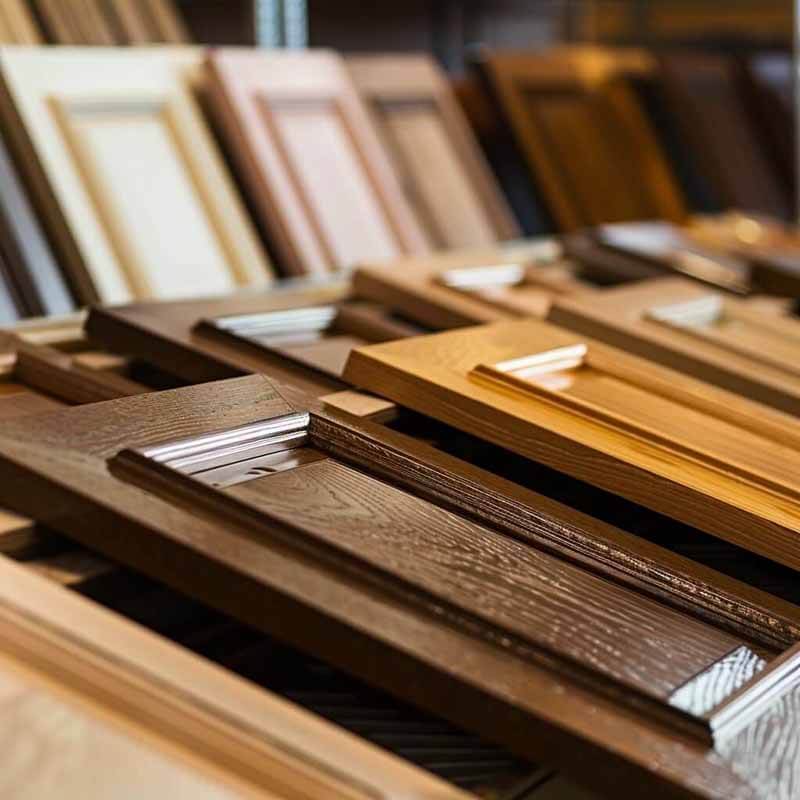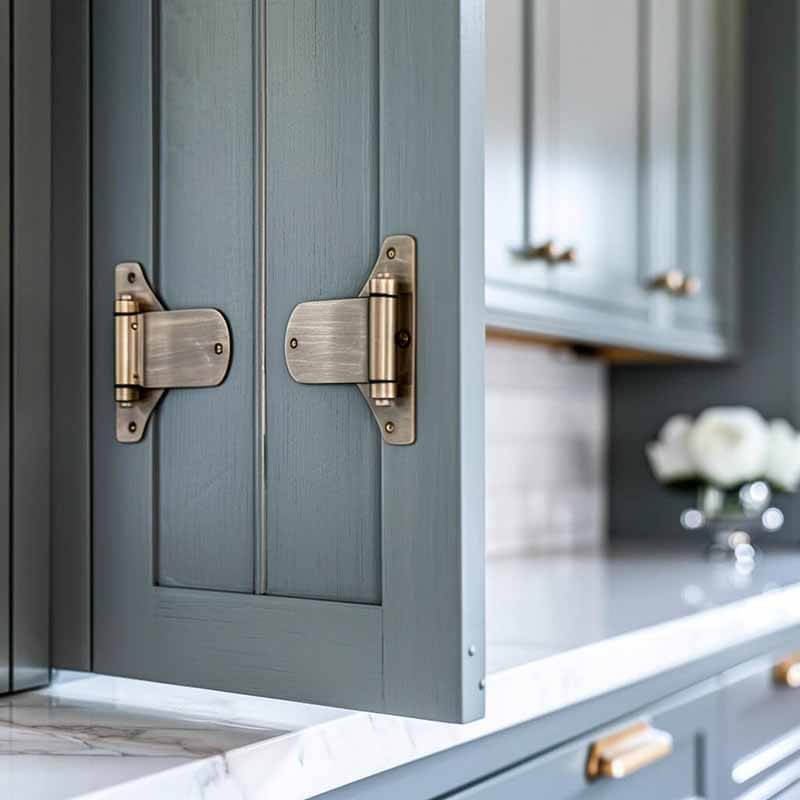Introduction
Kitchen cabinets are crucial for storage and enhancing kitchen aesthetics. Understanding their manufacturing process can help you make informed choices and maintain them better. This article will walk you through how kitchen cabinets are made, from material selection to the final product.
Material Selection

The quality and appearance of kitchen cabinets largely depend on the materials used. The two main categories are solid wood and engineered wood.
Solid Wood is known for its durability and natural beauty. Common types include oak, maple, cherry, and walnut. Solid wood cabinets offer a traditional look and are very strong, but they are also more expensive and require regular maintenance to prevent warping and cracking.
Engineered Wood includes materials like plywood, medium-density fiberboard (MDF), and particleboard. These materials are made by compressing wood fibers or particles with adhesives. Engineered wood is cost-effective, easy to work with, and comes in various finishes, making it a popular choice for modern kitchen cabinets. While not as durable as solid wood, it offers a budget-friendly alternative without compromising too much on quality.
Design and Measurement
The first step in making kitchen cabinets is designing them to fit the kitchen layout and meet the user’s needs. Accurate measurements are crucial to ensure each component fits perfectly in the allocated space. This involves detailed planning and often the use of specialized software to visualize the design and make necessary adjustments before production begins.
Cutting and Shaping

Once the design and measurements are finalized, the next step is cutting and shaping the wood. This involves using tools like saws and routers to cut the wood to the correct sizes and shapes according to the design plans. Precision is key to ensure that each piece fits together correctly and the final cabinet is stable and functional. Cutting and shaping can include intricate details and custom elements to match specific design preferences.
Sanding and Finishing
After the pieces are cut, they need to be sanded to remove rough edges and smooth the surfaces. Sanding is critical for achieving a professional look and ensuring that the finish adheres properly to the wood. Tools such as sandpaper and sanding machines are used to make the surfaces smooth and even, preparing them for the finishing process.
Assembly
Assembling the cabinets involves joining the different pieces together. Common methods include using dovetail joints, dowels, or glue. These methods ensure strong and durable connections between the cabinet components. The assembly process must be precise to ensure that the cabinets are stable and that all parts align correctly. This step often involves additional adjustments to make sure the doors and drawers operate smoothly.
Painting and Finishing
Once assembled, the cabinets are painted or stained to enhance their appearance and protect the wood. The choice of finish depends on the desired look and the type of wood used. A variety of finishes, such as paint, stain, or varnish, can be applied to achieve different looks and levels of protection. Adding a protective coating helps to safeguard the cabinets against moisture and daily wear and tear, extending their lifespan.
Hardware Installation

The final step in making kitchen cabinets is installing the hardware. This includes hinges, handles, and drawer slides. The hardware is essential for the functionality of the cabinets, allowing doors and drawers to open and close smoothly. Installing the hardware requires careful measurement and alignment to ensure that everything works properly. The choice of hardware can also add to the aesthetic appeal of the cabinets, offering a range of styles from modern to traditional.
Quality Inspection and Final Adjustments

Before the cabinets are ready for installation, they undergo a quality inspection to check for any defects or issues. The inspection includes checking the alignment, finish quality, and overall stability of the cabinets. Any necessary adjustments are made to ensure the cabinets meet the required standards. This step ensures that the final product is of high quality and ready for long-term use.
Conclusion
Making kitchen cabinets is a detailed process that requires a lot of skill and precision. High-quality cabinets not only improve the functionality and aesthetics of a kitchen but also add value to your home. With the rise of sustainable materials and smart design, the future of kitchen cabinets looks promising, offering more options for eco-friendly and technologically advanced solutions.
Understanding the process of making kitchen cabinets can help you appreciate the craftsmanship involved and make informed decisions when choosing cabinets for your kitchen. Whether you prefer traditional solid wood cabinets or modern engineered wood options, knowing how they are made will help you select the best cabinets to suit your needs and preferences.
